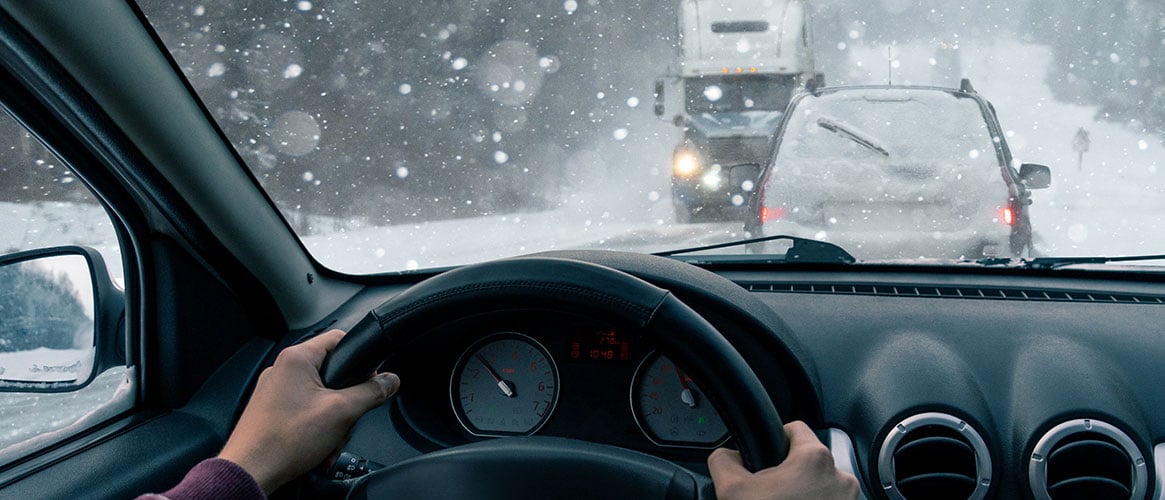Snow, ice, slush, and wet roads aren’t the only concerns when it comes to wintertime driving. In many parts of the state, your drivers are also encountering fog and heavy rain. Preventive measures and a little bit of preparation can help them safely arrive at their destinations and back, no matter how unpredictable the weather is outside.
What your drivers need to know about winter weather conditions
If your drivers must drive in any type of winter conditions, they should know how to react in the following scenarios:
- Whenever a car loses traction and starts to slide, it is usually best to turn the front wheels into the slide. In other words, if the rear of the car starts sliding to the left gently turn the steering wheel to the left and gently tap on the brakes to slow the vehicle.
- If driving on black ice or other slippery conditions never jerk the steering wheel or slam on the brakes.
- If driving in low visibility conditions, such as fog, drive slow and use you low beams.Remember to increase your following distance and consider pulling off the road and waiting for visibility to improve.
What your drivers should do to prepare for winter conditions
Before leaving, check to make sure the vehicle is in good working conditions. Inspect the windshield wipers, tires, headlights, brakes, and other equipment. Report anything that is not working to management and use another vehicle.
- Always carry tire chains. Make sure they are the correct size for the vehicle.
- Carry sand for traction – always keep some in the vehicle. Floor mats may be used as an expedient measure as well.
- Make sure the vehicle is in proper working order.
- Have a charged mobile phone, in case the driver gets stranded.
- Make sure the vehicle has a full tank of gas. Don’t wait for it to reach empty before filling up again.
- Bring emergency or repair equipment, including flashlights, flares, and a fire extinguisher.
- Carry blankets, warm clothing, and water in case the vehicle breaks down in cold or stormy conditions.
What to cover at your safety meeting on winter driving
One place to start is the Three P’s of Safe Winter Driving. Review and discuss with your drivers. Have them review the three P's again before leaving on a winter road trip. Also, discuss and demonstrate:
- How to install tire chains.
- How to check the windshield wipers, headlights, taillights, and brake lights to make sure all are in proper working order.
- How to check the tire pressure and tread to ensure both are in good condition.
- What to do when a vehicle is not in good working condition (how to report it and the process for using another vehicle).
- How to check the oil and antifreeze level to make sure there’s enough for the trip ahead.
A few preventive vehicle safety measures and some extra caution behind the wheel can help your workers make it home safe during the winter months.
Talk to your drivers about winter driving and make sure they are equipped to handle the conditions when travelling for work.

